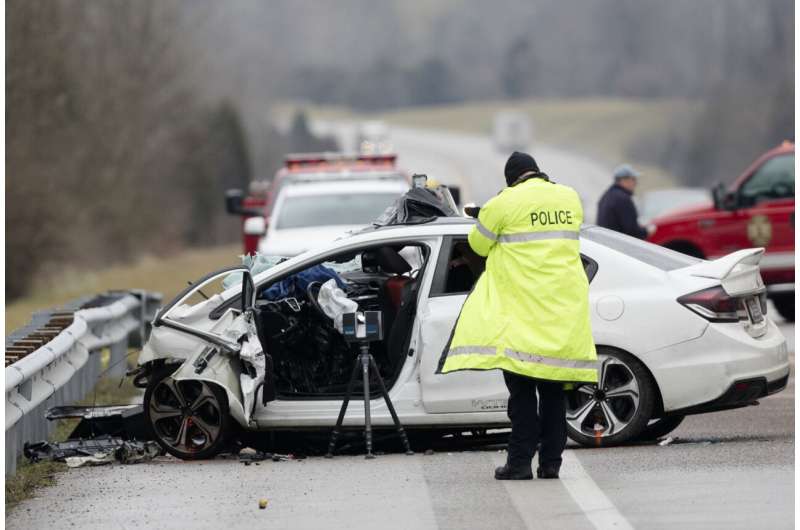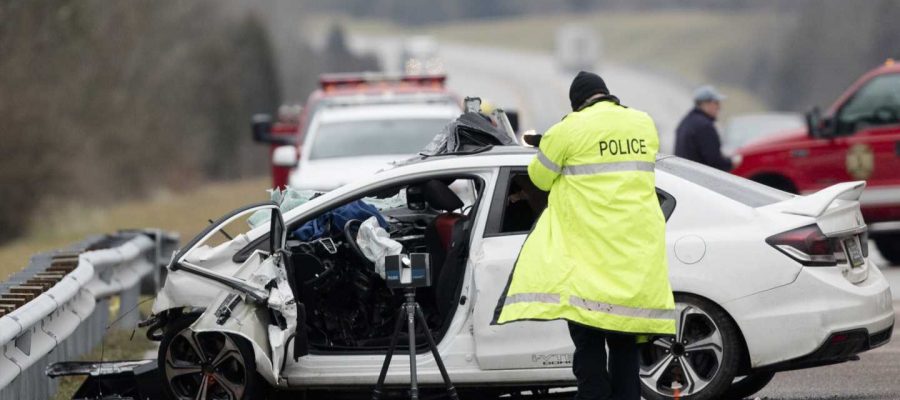
The number of people killed on U.S. roadways fell slightly from April through June, the first decline in two years as roads became more congested as the pandemic eased. But the government says the number of deaths remains at a crisis level.
Estimates from the National Highway Traffic Safety Administration show that 20,175 people died in crashes from January through June, a 0.5% increase the same period last year.
Yet the second-quarter decline ended a string of seven straight quarterly increases that began in the summer of 2020. The agency estimated that 10,590 people died on roadways from April to June, nearly 5% fewer than the same period a year ago.
Transportation Secretary Pete Buttigieg said while deaths may be declining, they are still at levels that require urgent action. “These deaths are preventable, not inevitable, and we should act accordingly,” he said in a prepared statement.
NHTSA Acting Administrator Ann Carlson told a group of state safety officials Monday that she hopes the recent decline is the beginning of a downward trend, but that the number of deaths remains unacceptable. “That is not the new normal we want,” she told the Governors Highway Safety Association.
Fatalities began to rise two years ago when roads were largely empty due to stay-at-home orders in many states. With less traffic speeds increased, as did reckless and impaired driving. Many people weren’t wearing seat belts, governments said.
Carlson said that because the estimates for this year are early, the agency doesn’t have specifics about why fatalities dropped. Agency estimates are typically close to actual numbers, which won’t be released until later in the year.
There also was a small second-quarter drop in the traffic death rate per 100 million miles driven, from 1.34 in the second quarter of 2021, to 1.27 this year, Carlson said.
Auto safety advocates welcomed the dip but said there is more the Biden administration can do to reduce traffic fatalities.
For many months now, crashes have declined even as deaths have surged, suggesting a pandemic-era reckless driving that could now finally be easing, said Michael Brooks, executive director of the nonprofit Center for Auto Safety.
“What it may be is that we’re seeing an easing of some of the issues that were caused by the pandemic—some of the speeding, open roads, risky driving issues,” Brooks said. “Traffic is returning to normal, the roads aren’t as empty as they were.”
“But the fact is the fatality rate is still very, very high,” he said. “There is a lot that remains to be done.”
He and others described some of the administration’s efforts as helpful but noted that it also has yet to issue proposed rulemaking to mandate automatic emergency braking in all passenger vehicles as required under the recent bipartisan infrastructure law.
“I think it’s premature to be hopeful about the slight dip in fatalities especially considering the tremendous loss that we’ve experienced over the last couple years,” said Cathy Chase, president of Advocates for Highway and Auto Safety.
“We do know good safety systems if implemented will prevent many crashes,” she said.
Nearly 43,000 people were killed on U.S. roads last year, the highest number in 16 years as Americans returned to the roads.
Source: Read Full Article
